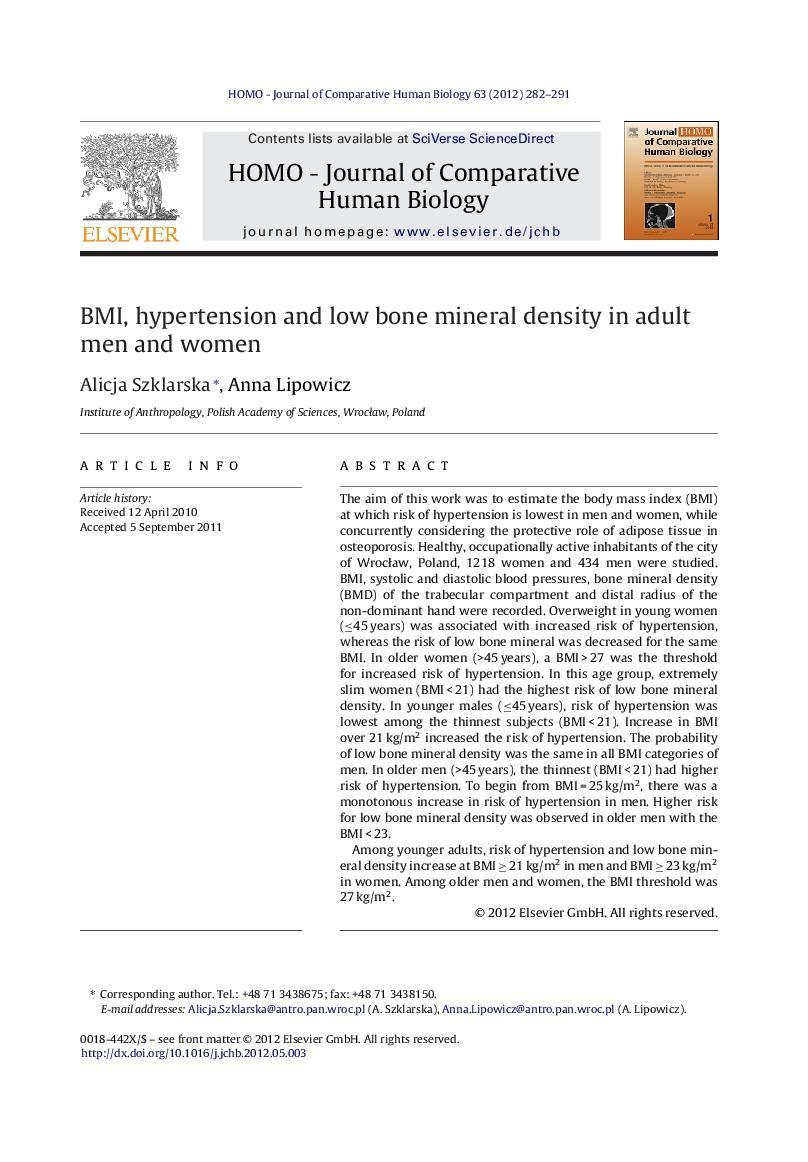| Article ID | Journal | Published Year | Pages | File Type |
|---|---|---|---|---|
| 100254 | HOMO - Journal of Comparative Human Biology | 2012 | 10 Pages |
The aim of this work was to estimate the body mass index (BMI) at which risk of hypertension is lowest in men and women, while concurrently considering the protective role of adipose tissue in osteoporosis. Healthy, occupationally active inhabitants of the city of Wrocław, Poland, 1218 women and 434 men were studied. BMI, systolic and diastolic blood pressures, bone mineral density (BMD) of the trabecular compartment and distal radius of the non-dominant hand were recorded. Overweight in young women (≤45 years) was associated with increased risk of hypertension, whereas the risk of low bone mineral was decreased for the same BMI. In older women (>45 years), a BMI > 27 was the threshold for increased risk of hypertension. In this age group, extremely slim women (BMI < 21) had the highest risk of low bone mineral density. In younger males (≤45 years), risk of hypertension was lowest among the thinnest subjects (BMI < 21). Increase in BMI over 21 kg/m2 increased the risk of hypertension. The probability of low bone mineral density was the same in all BMI categories of men. In older men (>45 years), the thinnest (BMI < 21) had higher risk of hypertension. To begin from BMI = 25 kg/m2, there was a monotonous increase in risk of hypertension in men. Higher risk for low bone mineral density was observed in older men with the BMI < 23.Among younger adults, risk of hypertension and low bone mineral density increase at BMI ≥ 21 kg/m2 in men and BMI ≥ 23 kg/m2 in women. Among older men and women, the BMI threshold was 27 kg/m2.
